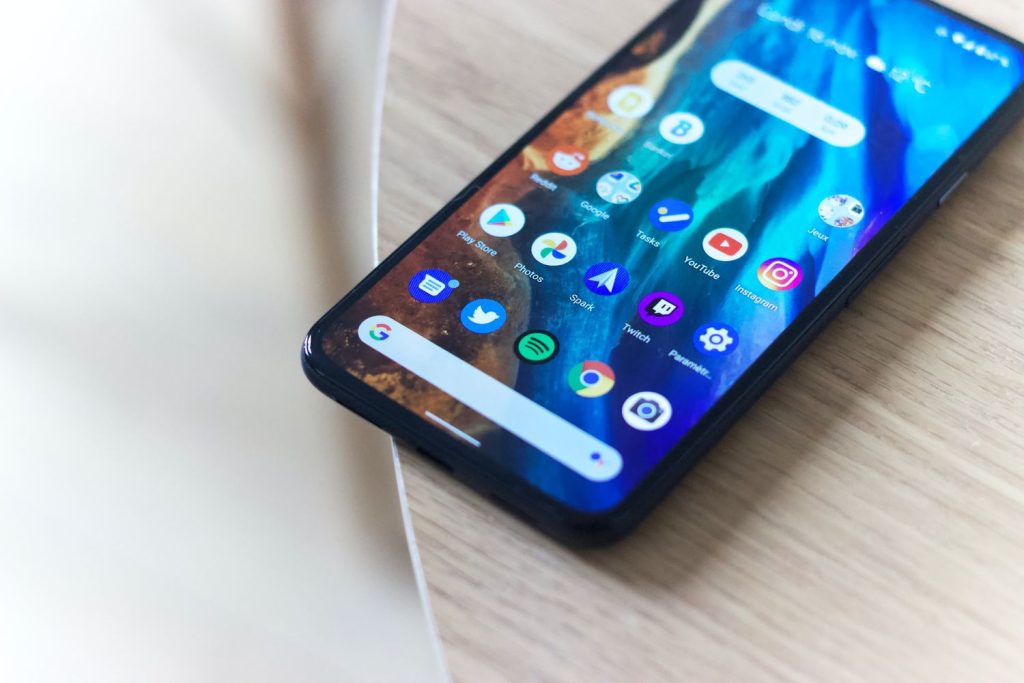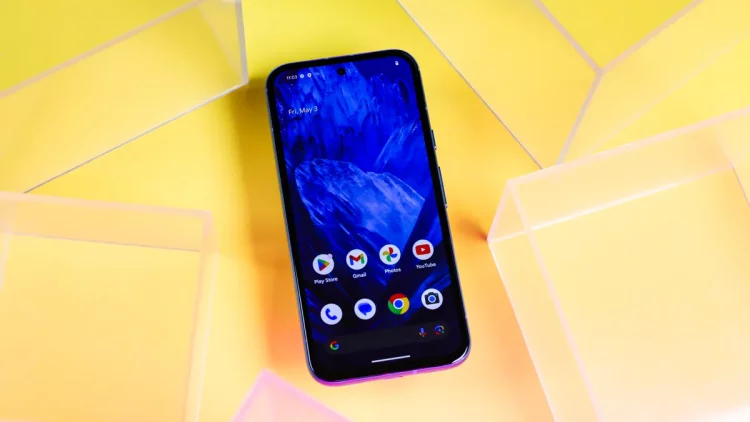Introduction: The Evolving Landscape of Mid-Range Smartphones
In an era where smartphones have become an essential part of our daily lives, the decision to choose the right device often comes down to a combination of features, performance, and most importantly—budget. While flagship devices from brands like Apple, Samsung, and Google offer top-tier specs, not everyone is willing or able to spend a small fortune on a new phone. Enter the world of mid-range smartphones—a category that strikes the perfect balance between cost and performance.
For those working with a limited budget, mid-range smartphones are the ideal solution. These devices deliver a solid performance experience without breaking the bank. Offering features typically found in high-end models—like advanced processors, high-quality cameras, and long battery life—mid-range phones are often a better value than their flagship counterparts, especially for users who do not need every single premium feature.
In this article, we will delve into the key factors that make mid-range smartphones an excellent choice for budget-conscious consumers. We will explore the performance, camera capabilities, battery life, design, and value of mid-range devices, providing detailed recommendations for the best phones in this category as of 2023.
1. Understanding the Mid-Range Smartphone Market
1.1 What Defines a Mid-Range Smartphone?
A mid-range smartphone typically falls within the price range of $300 to $700. These phones offer good performance, a balanced feature set, and usually come from reputable brands like Samsung, Google, OnePlus, and Xiaomi. They are not as feature-packed as flagship devices, but they still offer a highly capable smartphone experience.
While flagship devices may offer cutting-edge technologies such as 5G, OLED displays, and top-tier processors, mid-range smartphones provide many of these features at a more accessible price. In fact, the gap between mid-range and flagship phones has significantly narrowed in recent years. With advancements in mobile technology, it is now possible to get flagship-like experiences without the premium price tag.
1.2 Advantages of Choosing a Mid-Range Smartphone
1.2.1 Affordability
The most obvious benefit of opting for a mid-range smartphone is the affordable price. Flagship phones can easily cost $1000 or more, which is a hefty investment for many consumers. Mid-range smartphones, however, offer much of the same performance and features at a fraction of the cost. This makes them an attractive option for students, first-time buyers, and anyone who doesn’t need the absolute latest and greatest tech.
1.2.2 Good Performance Without Overpaying
A mid-range smartphone is designed to meet the needs of most users without going overboard. For day-to-day tasks such as browsing, social media, video streaming, and light gaming, these phones are more than adequate. With improvements in chipsets and optimization by manufacturers, mid-range devices now offer fast performance and smooth multitasking, making them perfect for most consumers.
1.2.3 Better Value
Mid-range smartphones offer better value for money compared to flagship devices. While you may not get the most powerful processors or the highest-quality displays, mid-range smartphones are often equipped with solid camera systems, decent battery life, and good software support, making them an attractive choice for those who want the best balance of price and performance.
2. Key Factors to Consider When Choosing a Mid-Range Smartphone
2.1 Performance: Powerful Yet Affordable Processors
One of the most important factors to consider when choosing a mid-range smartphone is its performance. While mid-range phones may not come with the latest Snapdragon 8 Gen chips or Apple A-series processors, they are often equipped with powerful, yet affordable alternatives like the Snapdragon 7-series, MediaTek Dimensity, or Exynos processors.
For instance, the Snapdragon 750G and Snapdragon 778G offer excellent performance for daily use, light gaming, and multitasking, while still being cost-effective compared to flagship models. Similarly, MediaTek Dimensity 800 series and Dimensity 1200 provide an excellent balance between cost and performance, offering 5G support and solid power for demanding apps and gaming.
While these processors may not offer the same raw power as the high-end options, they are often more than sufficient for the needs of the average consumer. For tasks like browsing, video conferencing, and streaming media, mid-range phones can run apps smoothly without lag.
2.1.1 Optimized Software Experience
The software experience is just as important as hardware performance. Many mid-range smartphones come with user-friendly interfaces like Samsung One UI, Xiaomi MIUI, or Android One. These software layers offer additional features, optimization, and a streamlined interface that enhances the overall performance of the device. Plus, many brands are committed to delivering timely software updates, which ensures that the phone remains secure and functional for years.

2.2 Display: Great Screens Without Premium Prices
The display is another crucial factor to consider, as it influences everything from watching videos to playing games. Mid-range smartphones now offer full HD+ displays as standard, and many even feature AMOLED or OLED panels, which were once reserved for flagship devices.
For example, the Samsung Galaxy A53 features a Super AMOLED display with a 120Hz refresh rate, offering vibrant colors and smooth scrolling, which is an excellent feature typically found in premium devices. Similarly, the OnePlus Nord 2 boasts a Fluid AMOLED display, providing sharp colors and excellent contrast.
While the resolution may not always reach 4K or the color accuracy may not match professional-grade devices, mid-range phones generally offer displays that provide good viewing experiences for most users, from watching Netflix to scrolling through Instagram.
2.3 Camera: High-Quality Photography at Lower Prices
A major factor in smartphone selection today is the camera system. Fortunately, mid-range smartphones have made significant strides in this area, offering multi-lens setups and impressive software features for capturing sharp, detailed images.
- Multi-lens systems: Mid-range phones now come with wide, ultra-wide, and macro lenses that allow for more creative control in capturing different types of scenes.
- AI camera enhancements: Many mid-range devices incorporate AI-driven software that automatically enhances photos based on the scene, helping users capture great pictures without needing to manually adjust settings.
- Night Mode: As smartphone cameras improve, even budget-friendly devices can capture well-lit, detailed images in low-light conditions.
While these phones may not rival flagship devices in terms of raw power, many still feature 48MP or 64MP sensors that can deliver high-quality photos. Some devices like the Google Pixel 6a are even known for their exceptional computational photography, which helps produce fantastic results even without cutting-edge hardware.
2.4 Battery Life: Long-lasting Power for All-Day Use
Battery life remains one of the most crucial aspects of smartphone performance. Mid-range smartphones are equipped with ample battery capacities, typically ranging from 4000mAh to 5000mAh, ensuring that they last through a full day of normal use. Moreover, many mid-range phones now support fast charging, which can quickly restore power during short breaks.
Phones like the Realme 9 Pro+ and Xiaomi Redmi Note 11 Pro offer super-fast charging that replenishes 50% or more of the battery in just 30 minutes, making it easier to keep the phone powered up throughout the day.
3. Best Mid-Range Smartphones to Consider in 2023
3.1 Google Pixel 6a
One of the best mid-range phones available in 2023 is the Google Pixel 6a. This device combines Google’s advanced computational photography with a clean Android experience and impressive performance, making it an excellent option for users who value camera quality and software longevity. It offers a 12.2MP main camera and a 6.1-inch OLED display, delivering vibrant visuals and stellar photography performance for a fraction of the price of flagship phones.
3.2 Samsung Galaxy A53 5G
Samsung has long been a leader in the mid-range market, and the Galaxy A53 5G continues to be one of the top contenders. With a 120Hz Super AMOLED display, 5G connectivity, and quad-camera setup featuring a 64MP main sensor, the A53 offers a premium experience at a budget-friendly price. The phone also boasts solid performance thanks to the Exynos 1280 chip and a 5000mAh battery that provides all-day usage.
3.3 OnePlus Nord 2 5G
The OnePlus Nord 2 5G offers great performance at an affordable price, thanks to the MediaTek Dimensity 1200-AI chipset and a 90Hz Fluid AMOLED display. The 50MP camera, enhanced by AI features, delivers excellent photo quality, and the 4500mAh battery ensures long-lasting power. OnePlus’s OxygenOS offers a smooth and clean user experience, making the Nord 2 a popular choice for budget-conscious users who want high-end performance.
Conclusion: Choosing the Best Value Mid-Range Smartphone
In conclusion, mid-range smartphones are an ideal choice for anyone on a budget who still wants excellent performance, a quality display, a capable camera, and long battery life. By opting for a device in this category, consumers can enjoy a premium smartphone experience without paying the high price of flagship models.
With brands like Samsung, Google, OnePlus, and Xiaomi leading the way, there is no shortage of fantastic options available. As the technology continues to evolve, the line between mid-range and flagship phones continues to blur, making it easier than ever to find the right balance of price and performance.
If you are in the market for a new smartphone but don’t want to break the bank, consider one of the top mid-range models we’ve discussed, and you’ll be sure to get a high-quality device that meets your needs without compromising on performance.











































